Related Research Articles
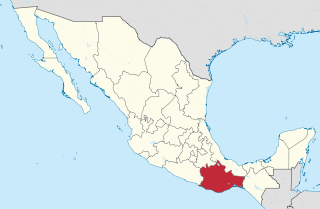
Oaxaca is a state in Southern Mexico that is divided into 570 municipalities, more than any other state in Mexico. According to Article 113 of the state's constitution, the municipalities are grouped into 30 judicial and tax districts to facilitate the distribution of the state's revenues. It is the only state in Mexico with this particular judicial and tax district organization. Oaxaca is the tenth most populated state with 4,132,148 inhabitants as of the 2020 Mexican census and the fifth largest by land area spanning 93,757.6 square kilometres (36,200.0 sq mi).

Chiapas is a state in Southwest Mexico. According to the 2020 Mexican census, it has the eighth largest population of all states with 5,543,828 inhabitants and the 10th largest by land area spanning 73,560.47 square kilometres (28,401.86 sq mi). Chiapas is officially divided into 124 municipalities, although the establishment of municipal authorities in Belisario Domínguez was suspended in 2015 pending the resolution of a territorial dispute between Chiapas and the neighbouring state of Oaxaca. In 2021, the Mexican Supreme Court resolved this dispute in Oaxaca's favour, and annulled the 2011 decree that had created Belisario Domínguez.

Ulises Ernesto Ruiz Ortiz is a Mexican politician and former governor of the State of Oaxaca. He took office in 2004 as a member of the Institutional Revolutionary Party (PRI).

The governor of Oaxaca, heads the executive branch of the Mexican state of Oaxaca. The office is created by the state constitution, which specifies a term of 6 years and prohibits reelection. The governor takes office on December 1, and the term ends on November 30 six years later.
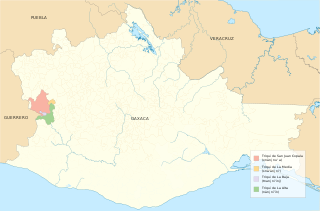
The Triqui, or Trique, languages are a family of Oto-Manguean spoken by 30,000 Trique people of the Mexican states of Oaxaca and the state of Baja California in 2007. They are also spoken by 5,000 immigrants to the United States. Triqui languages belong to the Mixtecan branch together with the Mixtec languages and Cuicatec.

The Triqui or Trique are an Indigenous people of the western part of the Mexican state of Oaxaca, centered in the municipalities of Juxtlahuaca, Putla, and Tlaxiaco. They number around 23,000 according to Ethnologue surveys. The Triqui language is a Mixtecan language of Oto-Manguean genetic affiliation. Trique peoples are known for their distinctive woven huipiles, baskets, and morrales (handbags).

The Mexican state of Oaxaca was embroiled in a conflict that lasted more than seven months and resulted in at least seventeen deaths and the occupation of the capital city of Oaxaca by the Popular Assembly of the Peoples of Oaxaca (APPO). The conflict emerged in May 2006 with the police responding to a strike involving the local teachers' trade union by opening fire on non-violent protests. It then grew into a broad-based movement pitting the Popular Assembly of the Peoples of Oaxaca (APPO) against the state's governor, Ulises Ruiz Ortiz. Protesters demanded the removal or resignation of Ortiz, whom they accused of political corruption and acts of repression. Multiple reports, including from international human rights monitors, accused the Mexican government of using death squads, summary executions, and even violating Geneva Conventions standards that prohibit attacking and shooting at unarmed medics attending to the wounded. One human rights observer claimed over twenty-seven were killed by the police violence. The dead included Brad Will, Emilio Alonso Fabián, José Alberto López Bernal, Fidel Sánchez García, and Esteban Zurita López.
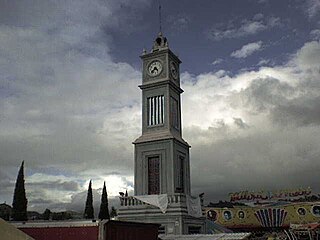
Tlaxiaco is a city, and its surrounding municipality of the same name, in the Mexican state of Oaxaca. It is located in the Tlaxiaco District in the south of the Mixteca Region, with a population of about 17,450.
Copala may refer to:

Copala Triqui is a Trique language primarily spoken in the municipality of Santiago Juxtlahuaca, Oaxaca, Mexico. A 2007 estimate by SIL International placed the number of Copala Triqui speakers at 25,000 in Mexico.
Putla Villa de Guerrero or simply Putla, is a town and municipality in the State of Oaxaca, Mexico. It is part of Putla District in the west of the Sierra Sur Region.
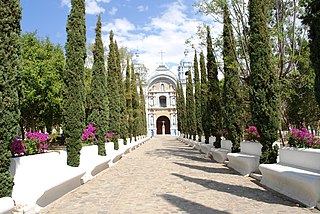
Ocotlán de Morelos is a town and municipality in the state of Oaxaca, about 35 km south of the center of the city of Oaxaca along Highway 175. It is part of the Ocotlán District in the south of the Valles Centrales Region. The area was a significant population center at the time of the Spanish Conquest, and for that reason an important Dominican monastery was established here in the 16th century. The complex still exists, with the church still being used for worship and the cloister area used as a museum. While mostly quiet, the city is an important distribution and transportation center for the south of the Central Valleys region of Oaxaca, a function which is expected to be reinforced with the opening of new highway being built to connect the city of Oaxaca with the Pacific coast. The city is known for artist Rodolfo Morales, who painted aspects of his hometown in his works and sponsored projects to save and restore historic monuments here. For generations the municipality has been known for its crafts, with the ceramics making Aguilar family producing some of the best known craftsmen.
San Juan Achiutla is a town and municipality in Oaxaca in south-western Mexico. The municipality covers an area of 49.76 km2. It is located in a mountain range, between the hills Negro to the East, Yucuquise to the Northwest, Cuate to the North and Totolote to the South. It is crossed by the river Los Sabinos and has a dam called Cahuayande. Its weather is temperate. It is in the Mixteca Alta, one of the three parties that make up the Mixteca region and in the Mixteca Alta is part of what was Achiutla, the significant Prehispanic place.
Ubisort is a paramilitary group in Oaxaca, Mexico affiliated with the Institutional Revolutionary Party (PRI) party.
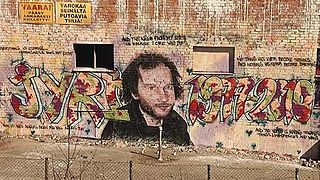
Jyri Antero Jaakkola was a Finnish human rights activist. He was on his way to San Juan Copala, a village of indigenous Trique people that has declared itself autonomous, as a human rights observer when he was shot dead by UBISORT, a paramilitary organization connected to Institutional Revolutionary Party. In the attack Alberta Cariño, an activist for the local organization CACTUS, was also shot dead and more than ten people were wounded.
San Juan Copala is a town in the municipality of Santiago Juxtlahuaca in the Mexican state of Oaxaca. It is located at 17°11′14″N97°57′46″W, at an altitude of 1578 meters above sea level. According to the 2005 census, carried out by the Instituto Nacional de Estadística y Geografía, San Juan Copala has a total of 786 inhabitants.

The Indigenous people of Oaxaca are descendants of the inhabitants of what is now the state of Oaxaca, Mexico, who were present before the Spanish invasion. Several cultures flourished in the ancient region of Oaxaca from as far back as 2000 BC, of whom the Zapotecs and Mixtecs were perhaps the most advanced, with complex social organization and sophisticated arts.
Events in the year 1954 in Mexico.
The Movement for Triqui Autonomy is the struggle for independence of the Triqui people, who live in the Mexican state of Oaxaca. Once based in town of San Juan Copala, they are now largely a diaspora due to the ongoing conflict in the region. In 1975, an Indigenous movement known as the club was formed with the goals of "agrarian conflict resolution, the defense of human rights, and the formation of cooperatives that would market regional products." Not long after it was created, the club's leaders were killed and in 1978 the government introduced a military presence in San Juan Copala. The conflict culminated in 2006 with the clash between the state of Oaxaca, led by the Institutional Revolutionary Party (PRI), and the indigenous autonomy movement, led by the Popular Assembly of the People of Oaxaca (APPO). APPO was formed in June 2006 during the teacher strikes as an alliance to oppose Oaxacan Governor Ulises Ruiz Ortiz. The attacks have since been stepped up in order to quash the autonomy movement and return control over the land to the government.
References
- ↑ López Bárcenas, Francisco (10 Jan 2007). "The autonomous municipality of San Juan Copala (Oaxaca)". Narco News Bulletin.
- ↑ México: La guerra contra los triquis, Francisco López Bárcenas, La Jornada, 10-12-2009, "KAOSENLARED.NET -- México: La guerra contra los triquis". Archived from the original on 2010-05-07. Retrieved 2010-06-04.
- ↑ Davies, Nancy (17 May 2010). "Oaxaca: The Ongoing Extermination of San Juan Copala's Autonomous Triquis". Upsidedownworld.org.